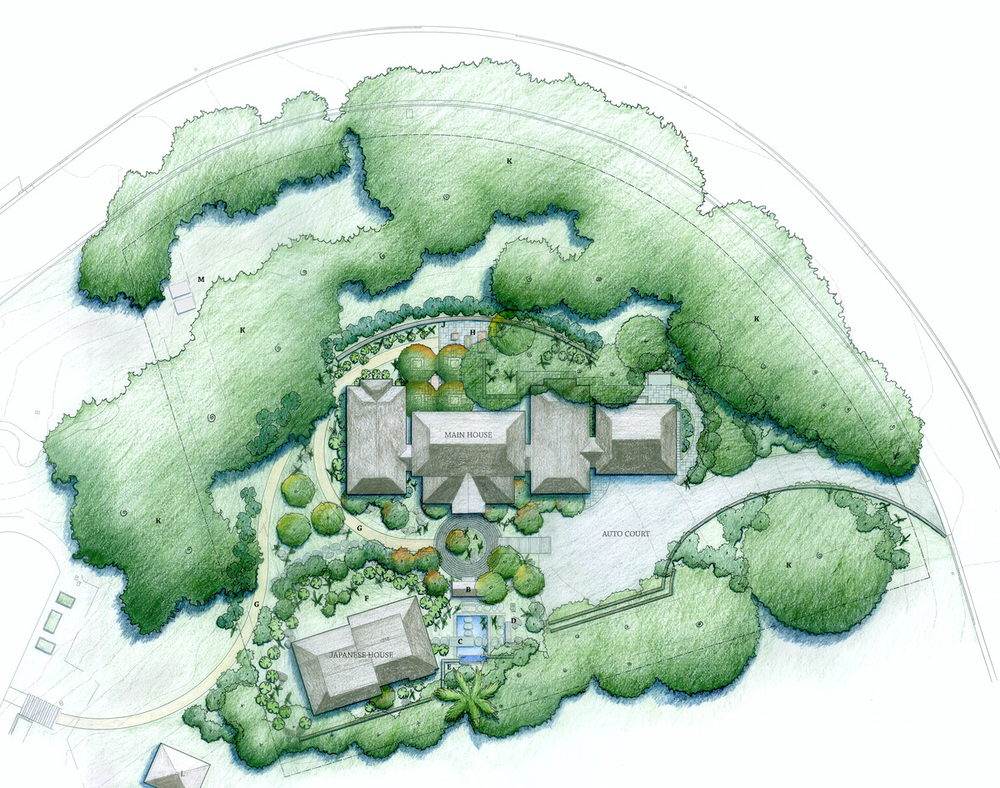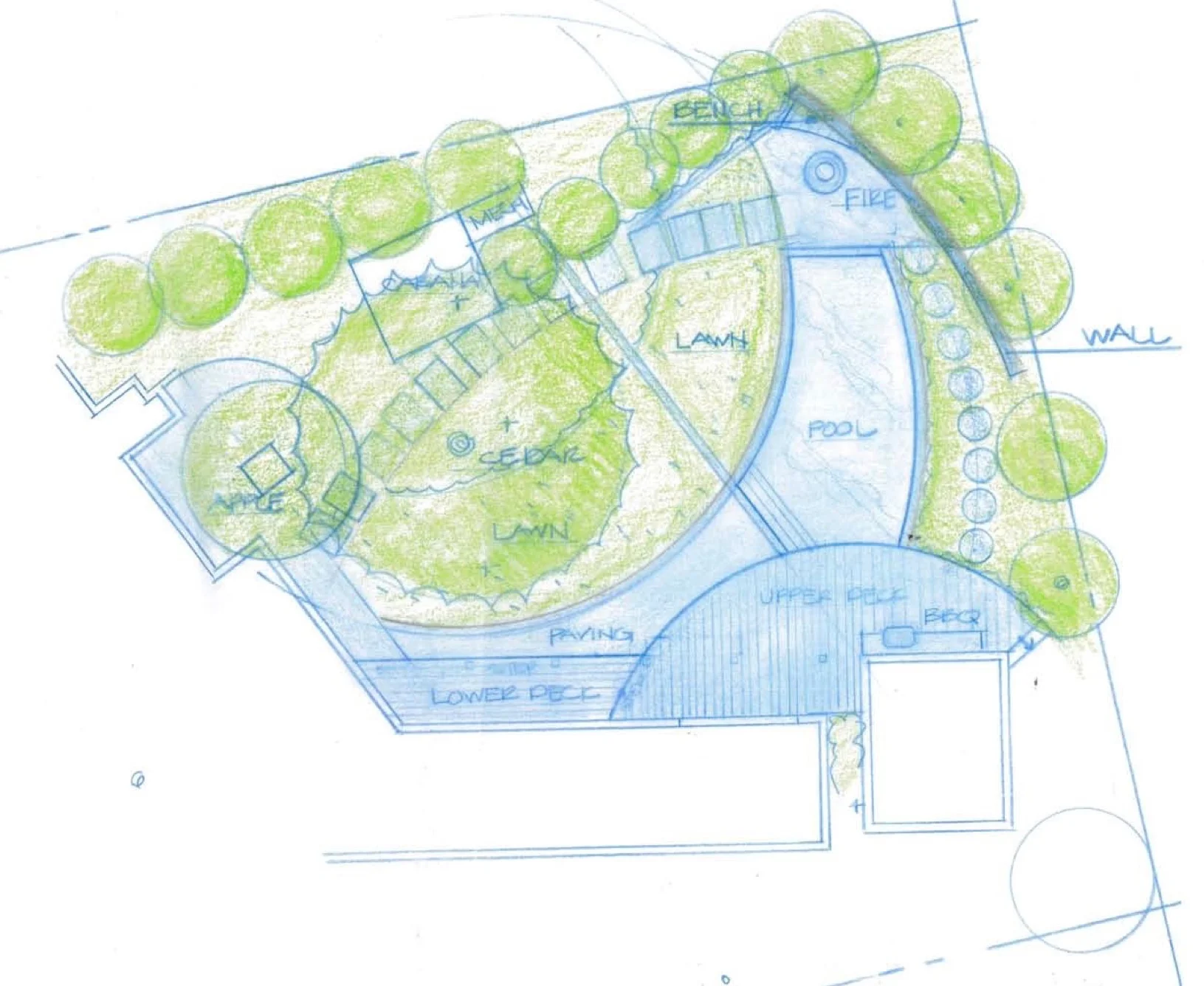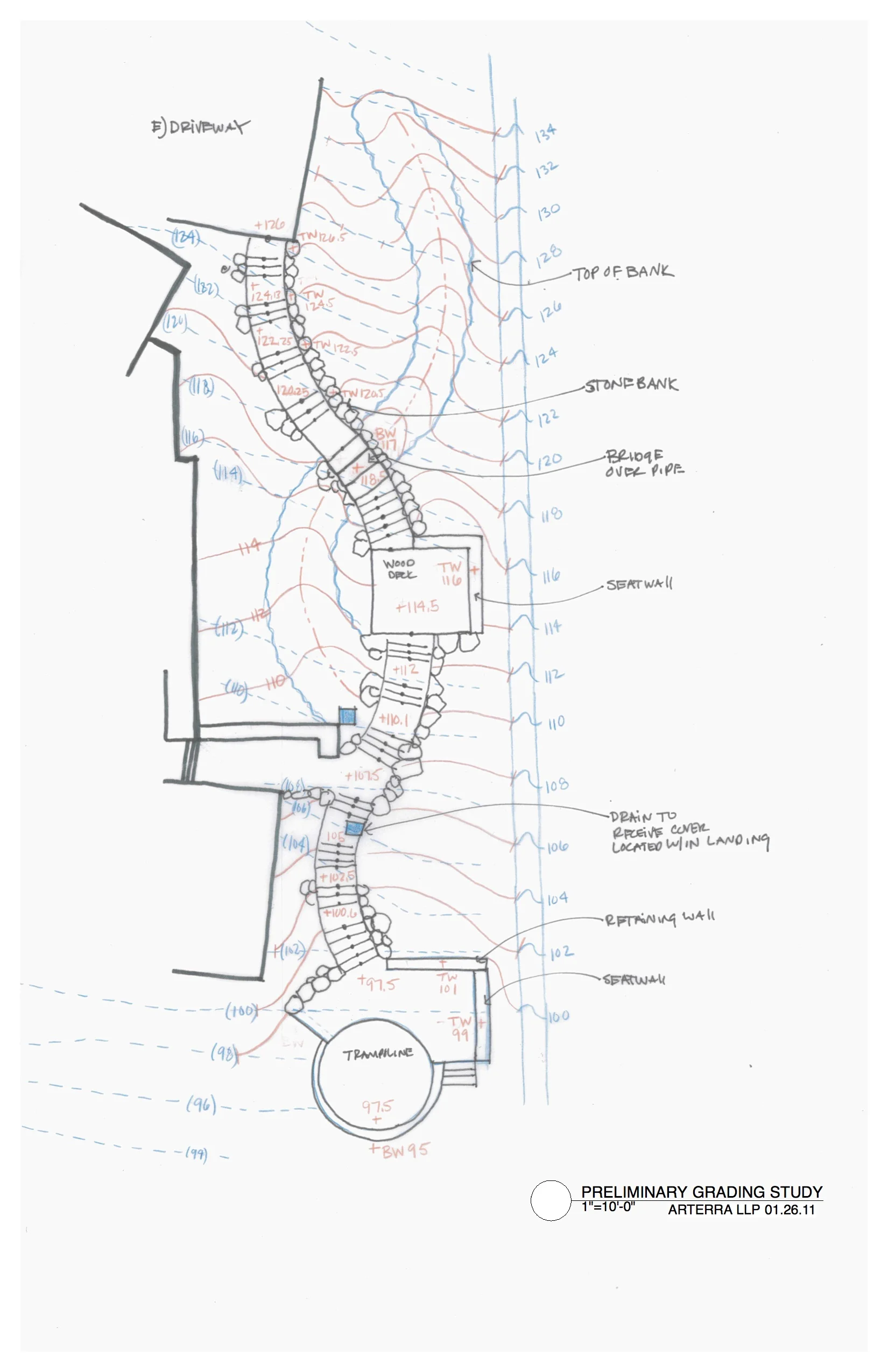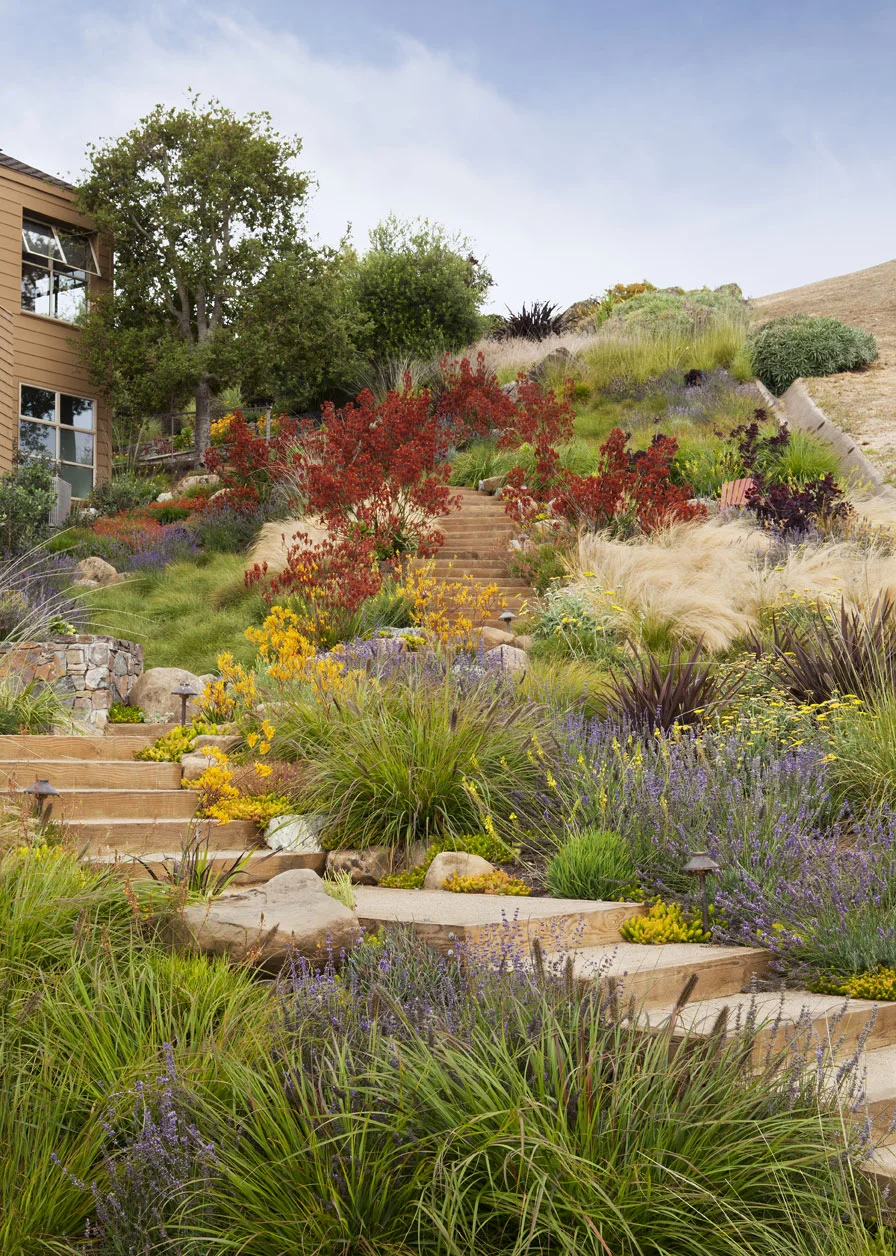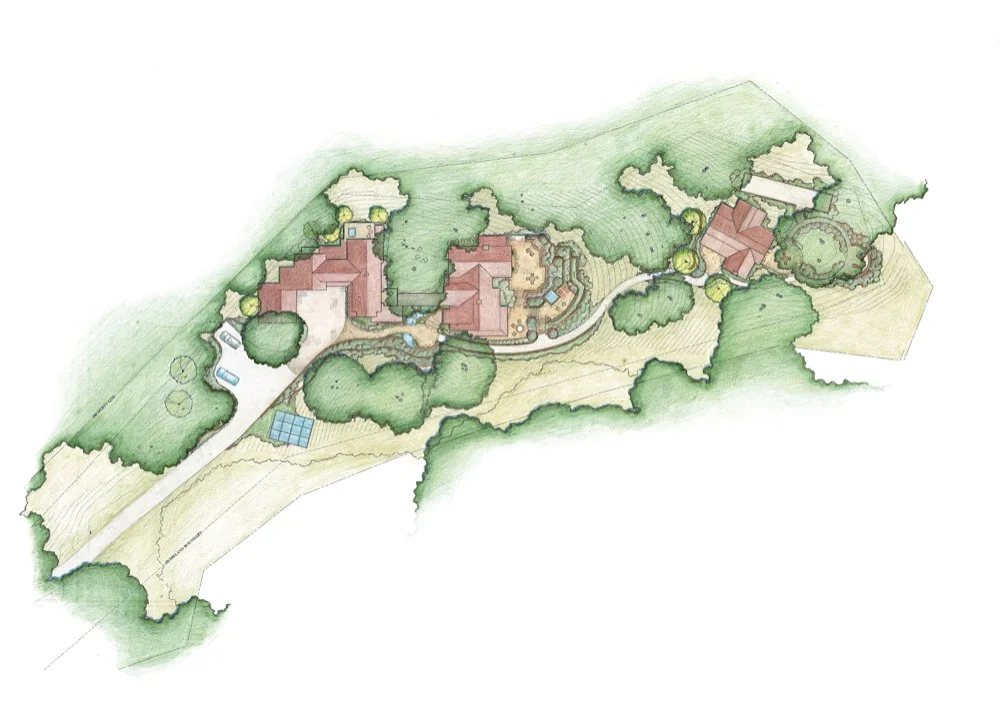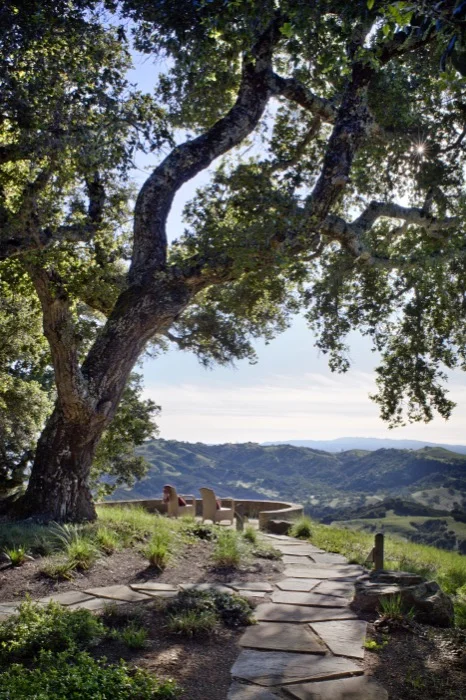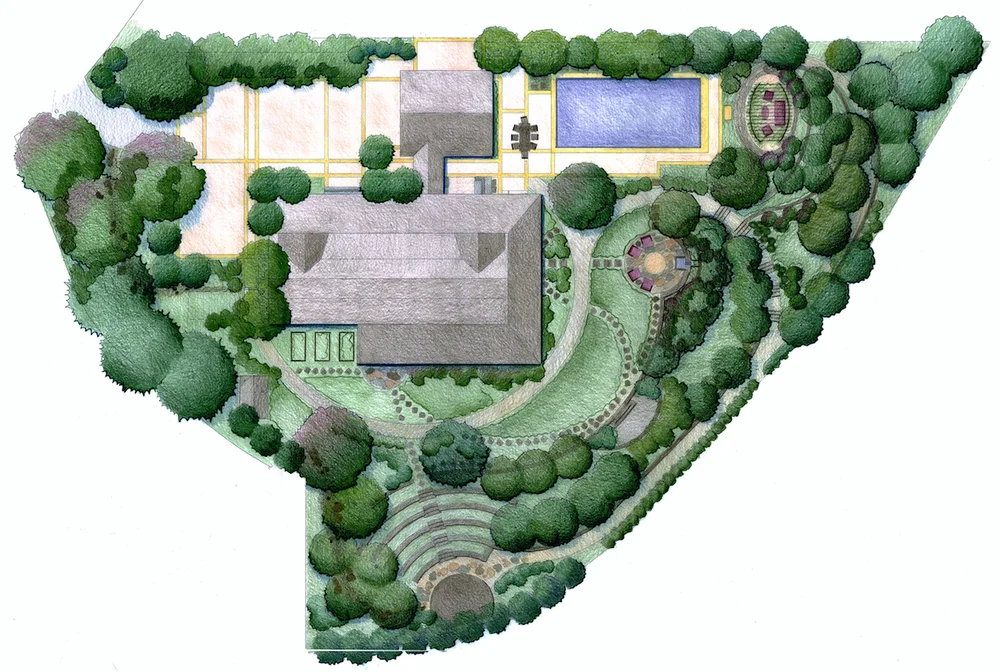Garden Geometries: Curving Line
By Vera Gates
Of all the garden geometries, the curving line is by far the most challenging and rewarding. A good strong curve is a magical thing and very powerful. People are drawn to this form like no other. Perhaps because it is so mesmerizing and visually engaging. Perhaps because it is such a comforting shape, enveloping us in the gesture of embrace.
We often use the curving form in garden design and find it works brilliantly for a number of reasons, and to solve a number of design problems. Of its own accord, the mathematically precise curving form is singularly beautiful, with a graceful visual movement. This movement guides the viewer’s eye around the space and directs attention to the intentionally important aspects.
The mathematics of the curve are nuanced and complex. Curves lend themselves beautifully to garden design and offer visual movement and spatial connection. A beautiful curve can define and carry a design. Interwoven with other geometries, a curving form can receive and order otherwise disconnected forms. The curve is very forgiving of past built transgressions and gracefully connects building and spaces that might not otherwise make sense together.
We also use curves at natural edges, where the built environment interfaces with the natural.
This is often as simple as a gently curving, planted edge, but at times we are actually called upon to redefine natural edges of land and topography.
Curving forms allow a graceful resolution to irregularly shaped parcels. Curving forms can also frame a view, destination or create terminus. Combining curves with other geometries creates drama.
A good rule of thumb for curving forms is this: if you can mathematically draw a beautiful curving form, then it can be built, and if it can be built, it will be very pleasing to the human eye. Conversely, if it does not look good on paper, it will look ten times worse once built. All curves are ultimately arcs, with radius points. There are no get arounds.
Very early in my career I was trying to design a “natural” pond form and it was not going well. Sketch after sketch resulted in various versions of ugliness. Finally an architect in the office handed me a book entitled The Power of Limits, by György Doczi. This book completely changed my perception of form, my interpretation of geometry and my understanding of proportion in the natural world. And it really helped with the design of curving forms.
In the preface, Doczi writes:
“In all realms of our experience, we are finding the need to rediscover proper proportions. The proportions of nature, art and architecture can help us in this effort, for these proportions are shared limitations that create harmonious relationships out of differences. Thus they teach us that limitations are not just restrictive, but they are also creative”.
A fearless use of curving forms allows us great flexibility and freedom.


